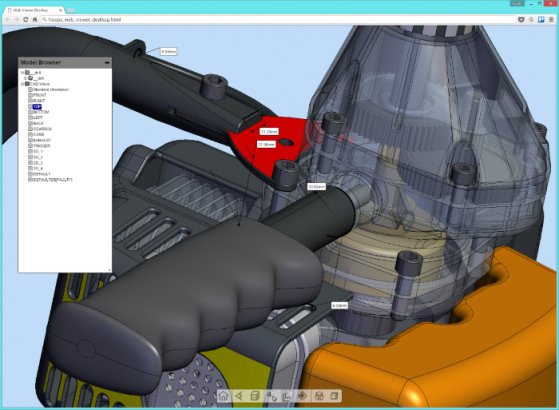The annual think tank for engineering software found its stride digging into the details.
COFES (Congress on the Future of Engineering Software) has often included some discussion of file conversion and translation, and it might seem that there’s nothing more boring, but file format discussions have often been passionate in the CAD world. Software providers are frequently accused of using their formats to lock up customer data, and customers struggle to work with data from different software vendors.

Depending on who you talk to, being able to work with multiple CAD products in a practical way is either all but impossible, or it is a problem well on its way to solution. There is one big difference today: large customers are holding their suppliers responsible for problems. We heard it over and over at COFES in several conversations. In large companies, deals may still be made in the C-Suites, but the rank and file working with the tools are getting more of a say when they’re not working. At COFES 2016, we had some good talks about dangerous transitions that happen when suppliers are not giving their customers the freedom to work with different tools.
In the meantime, customers still forced to rig up solutions for translating files between programs with a mixed bag of tools.
TechSoft 3D in the cloud
TechSoft uses COFES as a forum for their new technology and products. The company is building its market by enabling Model Based Design tools (MBD). The company owns Hoops and 3D PDF, which have enabled it to build translators and enable companies to share 3D data.
TechSoft is not the first to MBD. At SolidWorks World 2015, SolidWorks unveiled its SolidWorks MBD, a tool which lets SolidWorks users share Product Manufacturing Information (PMI) and Geometric Dimensioning and Tolerancing (GD&T). For much of CAD’s history, this data was delivered in drawings, but the use of MBD is enabling companies to deliver this information in a 3D digital format.
SolidWorks says their MBD product is the next step to a drawingless environment for manufacture. Instead of created 2D drawings, MBD can include all the necessary data for standard file formats such as eDrawings and 3D PDF. Tools like MBD enable users to combine data in ways that are meaningful to intended recipients, and it also gives users the ability to create a dynamic document with different views, for example.
TechSoft also introduced their Tetra4D Enrich product at SolidWorks World earlier this year. This tool also gives users the ability to present GD&T/PMI and other metadata in a 3D technical package (TDP) for distribution. Unlike the SolidWorks MBD, Tetra4D Enrich includes a 3D CAD translator that can convert more than 20 formats into an interactive 3D PDF document. It enables companies that are working with multiple CAD products to combine models in one package that can be read in Adobe’s free Acrobat Reader. Users can create their own 3D PDF without needing a seat of the CAD application. The tools are plug-ins for Acrobat Pro.
More often than not, the majority of people who need to access 3D models are not the people creating that information in the first place.
Onward, upward, and bigger
At COFES, TechSoft VP of Products Gavin Bridgeman demonstrated the company’s products getting a boost from server technology and WebGL. The company’s Hoops Communicator enables users to view and interact with CAD and BIM models—the company has built viewers for the browser, mobile apps, and Acrobat Reader.
Bridgeman also showed models getting a boost from Nvidia’s Grid. What was already a pretty decent demo of 3D models of race cars being streamed, accessed, and manipulated in real time got even more impressive as Bridgeman added more and more models and topped it off with Boeing’s massive 777 model.
The company also demonstrated a product much like its Tetra4D to create content for the cloud. As with its 3D PDF tools, users can gather 3D models into a package with models, PMI/GD&T data, any other associated data, and present it as an online document that can be interactively viewed in a browser.
Parasolid Convergent Modeling
The customers are winning—as they should—but they’ve had a long battle. There are as many approaches to multi-CAD challenges as there are CAD formats. This year translation again bubbled up at COFES as Kubotek unveiled its new KCM modeler, which will be incorporated into the KeyCreator CAD program and will also form the basis for a line of translators from Kubotek. The Parasolid group at Siemens also revealed their improvements to the Parasolid modeler, which will make enable their customers to work more easily between faceted models, for instance models created for analysis or STL files and classical Parasolid B-Rep files. At COFES, Parasolid Product Manager Peter Kerwin described the group’s progress on supporting faceted models via faceted BReps. Siemens is calling their approach Convergent Modeling.

Kerwin said faceted models are often used to create highly complex shapes, and so there is also interest from the AEC companies. Kerwin says that in the current version of Parasolid, customers can work in classic B-Rep or faceted B-Rep, but the customers of applications that adopt Parasolid 28.1 will be able to work in class B-Reps as the have been or facet models or a combination. The features of PCM and FCM are:
- Full power of Parasolid modeling on faceted models
- Industry-proven performance, reliability and quality Flexible Convergent Modeling
- Freedom to model with classic B-Rep or facet models, or a combination of the two
- Flexible licensing options to license the package level you need.
Round-tripping model data to analysis
One of the companies that can be expected to adopt Convergent Modeling is Onshape. Founder Jon Hirschtick was at the briefing and praised the update. An obvious application of Convergent Modeling is the ability to work more seamlessly in CAE. As it is now, sending a model out for analysis is usually a one-way trip, but Convergent Modeling would enable customers to more iteratively use CAE tools to build a model, analyze it, incorporate changes, and analyze again, an obviously more practical approach.
Kerwin said Parasolid products will not have to translate between faceted models and classic B-Rep models. He also assured the people in the audience that Parasolid is not choosing sides. The work the company is doing to support faceted models “is additive,” meaning Parasolid will not decrease its commitment to classic B-Reps in favor of faceted models.





